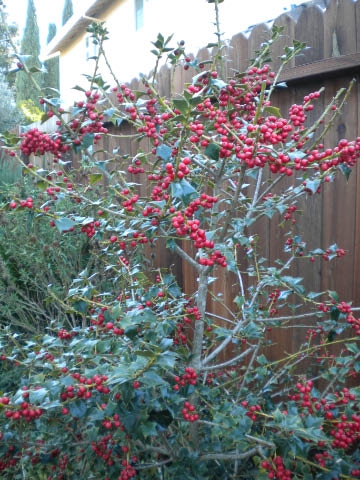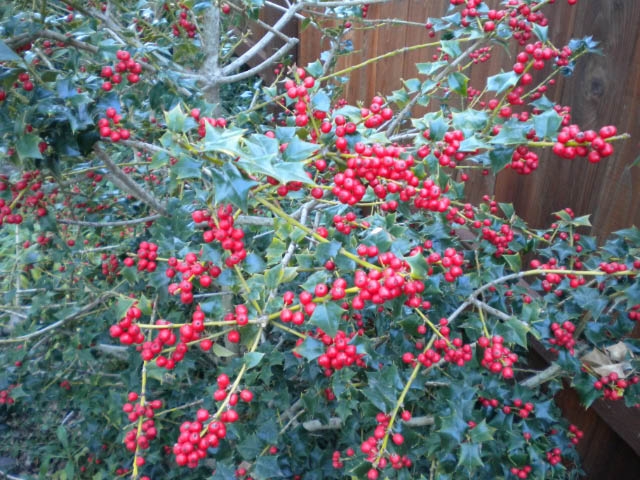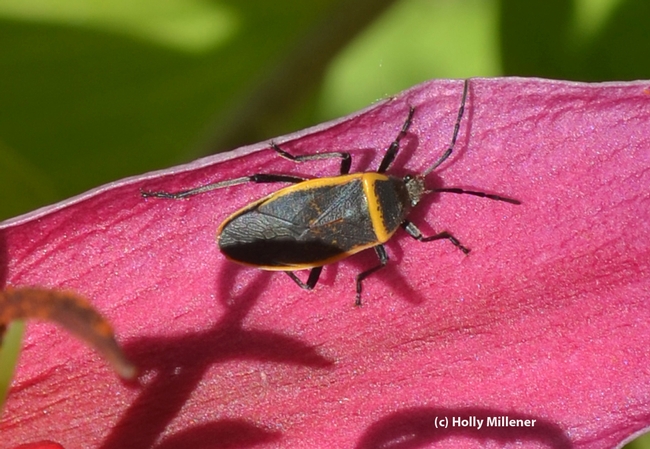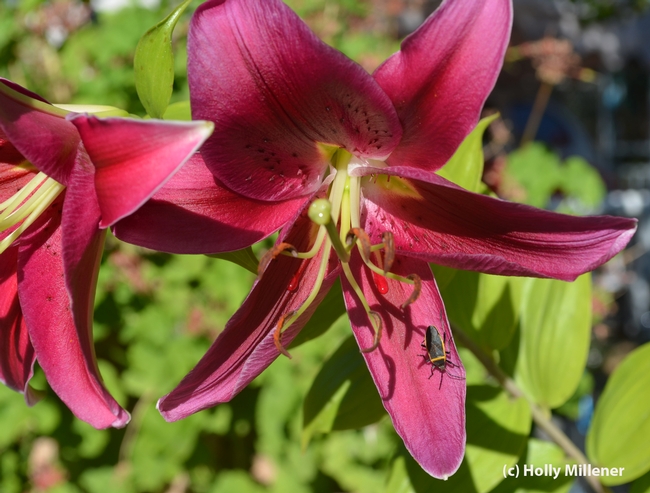Posts Tagged: holly
From Controlling Insects to Relieving Human Suffering
From controlling insects to relieving human suffering... Entomologist Bruce Hammock, distinguished professor of entomology at the University of...

Entomologist Bruce Hammock in his UC Davis office. He holds a joint appointment with the UC Davis Department of Entomology and Nematology and the UC Davis Comprehensive Cancer Center. (Photo by Kathy Keatley Garvey)
Success with Holly Trees
I've always loved holly especially around Christmas time. I once hand carried a holly wreath home on an airplane after a trip to Seattle. Not wanting to do that too often, I decided I would have to get a holly tree. I found I would need two trees a male and a female if I wanted berries. My local nursery kindly ordered them for me. (Note this was at least a decade ago).
These being my pre- Master Gardener days, I am not sure what variety of holly I have. I suspect it is either Ilex aquifolium, English Holly, or an English Holly cross breed. I put them promptly into containers where they languished for the next several years. I finally decided I had to do something so I transplanted them into the ground in my side yard.
Both trees perked up immediately. The male tree which got put in the shadier spot is about three feet tall. The female who ended up in the sunnier spot shot up to five feet. Over the past year or two I was able to pick some sprigs to put into arrangements, but I was afraid to cut too much and didn't have many berries.
This year the female tree has exploded with berries. I even cut enough branches to make my own small holly wreath. (I now realize why we don't use holly at the wreath workshop, you need major protection for dealing with those spines.)
I've been trying to watch the berries, but I haven't seen any birds eating them yet. One Internet source suggested that the berries needed a few freezes to soften. I am going to continue to watch and will see what happens. Robins and mockingbirds are supposed to like them.

DSCN2422

photos by Karen Metz
What's That Bug?
Lynn Kimsey knows her bugs. Kimsey, director of the Bohart Museum of Entomology and professor of entomology at the University of California, Davis,...

This "mystery bug" is a largid in the group of insects called bordered plant bugs, says Lynn Kimsey, director of the Bohart Museum of Entomology. (Photo by Holly Millener)

Bordered plant bug on a lily in an Oroville yard. (Photo by Holly Millener)
Ranches can increase income with agritourism
Cattle ranches may be able to boost the bottom line by inviting tourists onto their land for bird watching, hiking, photography or just getting an up-close look at California beef production.
This was the message shared by the director of UC Cooperative Extension in Sierra and Plumas counties, Holly George, at UCCE's annual Oakdale Livestock Forum, according to a story published today in the Modesto Bee.
"I would advise you to look at what you have and genuinely share that," George was quoted in the story.
As an example, George cited the annual Eagles and Agriculture event near Carson City, where raptors flock each year during winter calving season. Eagles and Agriculture -- which attracts photographers, birders and nature-lovers who wish to observe bald and golden eagles, hawks, falcons, owls and a variety of other bird and wildlife species -- demonstrates the potential for interaction between nature and agriculture.Cattle farmer Judy Scheppmann, who runs 100 head of cattle on her 360-acre ranch near Farmington, opens her property to a horseback riding group and for garden club gatherings.
"(Ranching is) a way of life, and I would hope the young people could come and appreciate where their food is produced," she said.

An American bald eagle photographed by UC weed scientist Joseph DiTamaso.
Slow Food group to air Sierra Valley video
The Lake Tahoe chapter of Slow Food will present the short video "Is Sustainable Attainable?" at its January meeting next week. The show is another opportunity to spread the word about a series of videos promoting the rural culture in Sierra Valley, Calif., produced as part of the UC Davis "Art of Regional Change."
The project, called "Passion for the Land: Personal Stories from the Sierra Valley," is a collection of 12 stories, told on video through narration and photos, about the challenges to agricultural viability and rural community life in Sierra Valley, according to an article in the Sierra Sun. The series was a collaborative project involving Jesikah Maria Ross of Art of Regional Change, Holly George of UC Cooperative Extension in Plumas and Sierra counties and Sierra Valley farmers and ranchers.
The "Sustainable" segment is the story of Gary Romano, who in 1990 purchased a 65-acre portion of his families' former 3,600-acre cattle ranch in Sierra Valley to establish an organic farm."I want people to understand that you don't need 5,000 acres to make a living; there is a need for farmers with 5, 10 or 60 acres," Romano was quoted in the story. "And just because the land isn't being used for farming now doesn't mean it can't be in the future. We need to preserve open space."

Gary Romano and his family on the Sierra Valley farm.

